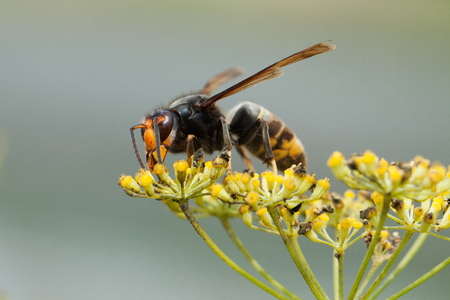A few months ago, a woman captured what she believed was an Asian giant hornet (Vespa mandarinia) within her northeastern home. For those who are unaware, this is the hornet species that American media outlets have been referring to as “murder hornets” ever since specimens were found in the US for the first time earlier this year in Washington state. The above homeowner described the specimen as being relatively large in size with body markings similar to those found on the Asian giant hornet species.
The homeowner claimed that she discovered the alleged hornet specimen on the same day that the exotic Asian hornet was first reported as inhabiting Washington. This strongly indicates that the insect specimen found by the woman was not an Asian giant hornet, as these hornets have not yet been found outside of Washington. The specimen found in the northeastern home was later identified as being a European hornet (V. crabro), which is another large non-native hornet species from Eurasia that has established a thriving habitat in the eastern and parts of the western US.
The insects commonly referred to as “hornets”are wasps that belong to the genus Vespa, and along with yellow jackets, hornets belong to the subfamily Vespinae. Hornets are characterized by their large bodies, highly aggressive defensive behaviors, potent venom, and for constructing exposed nests located above ground, usually in trees, shrubs, and occasionally, on the exterior of manmade structures. Most documented hornet species inhabit tropical regions of Asia, and no hornet species is native to North America. The non-native European hornet that was first discovered in the US around 180 years ago is the only “true hornet” species found in the country, as the bald-faced hornet (Dolichovespula maculata) is actually a yellow jacket, not a hornet.
Unlike yellow jackets and paper wasps, the European hornet prefers to construct nests on trees and within tree hollows in undisturbed forested areas where they are rarely encountered by humans, though European hornet nests are occasionally found on structures, trees, and shrubs in residential and urban areas. Asian giant hornet workers can grow slightly longer than two inches in length, while European hornet workers are around an inch in length. Amazingly, the European hornet specimen found by the northeastern homeowner happened to be a queen, which made the specimen more difficult to discern from Asian giant hornet workers. Other wasp species that have been frequently mistaken for Asian giant hornets in Massachusetts include solitary cicada killer wasps, bald-faced hornets, and sand wasps.
Have you ever encountered a European hornet nest?

